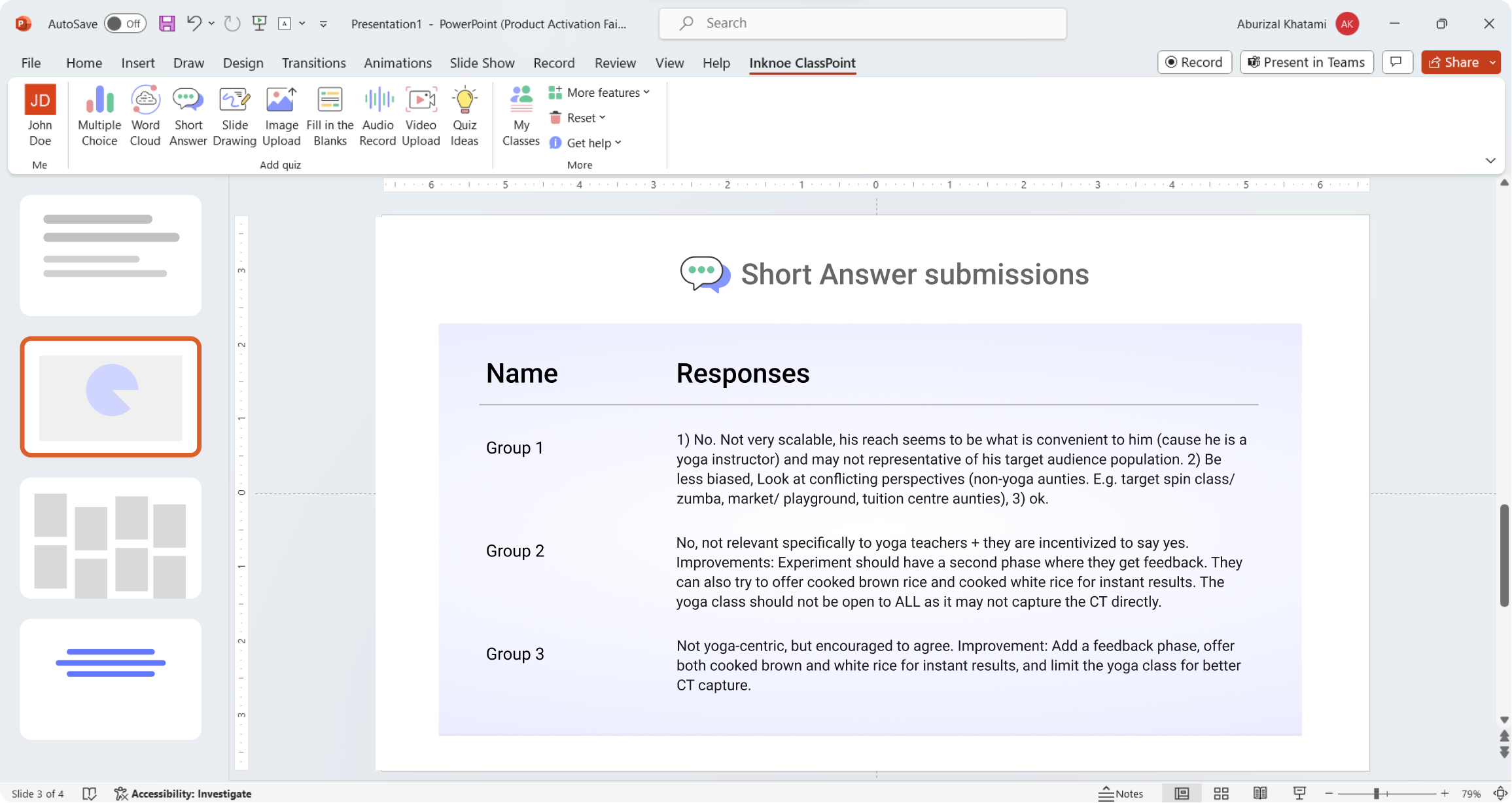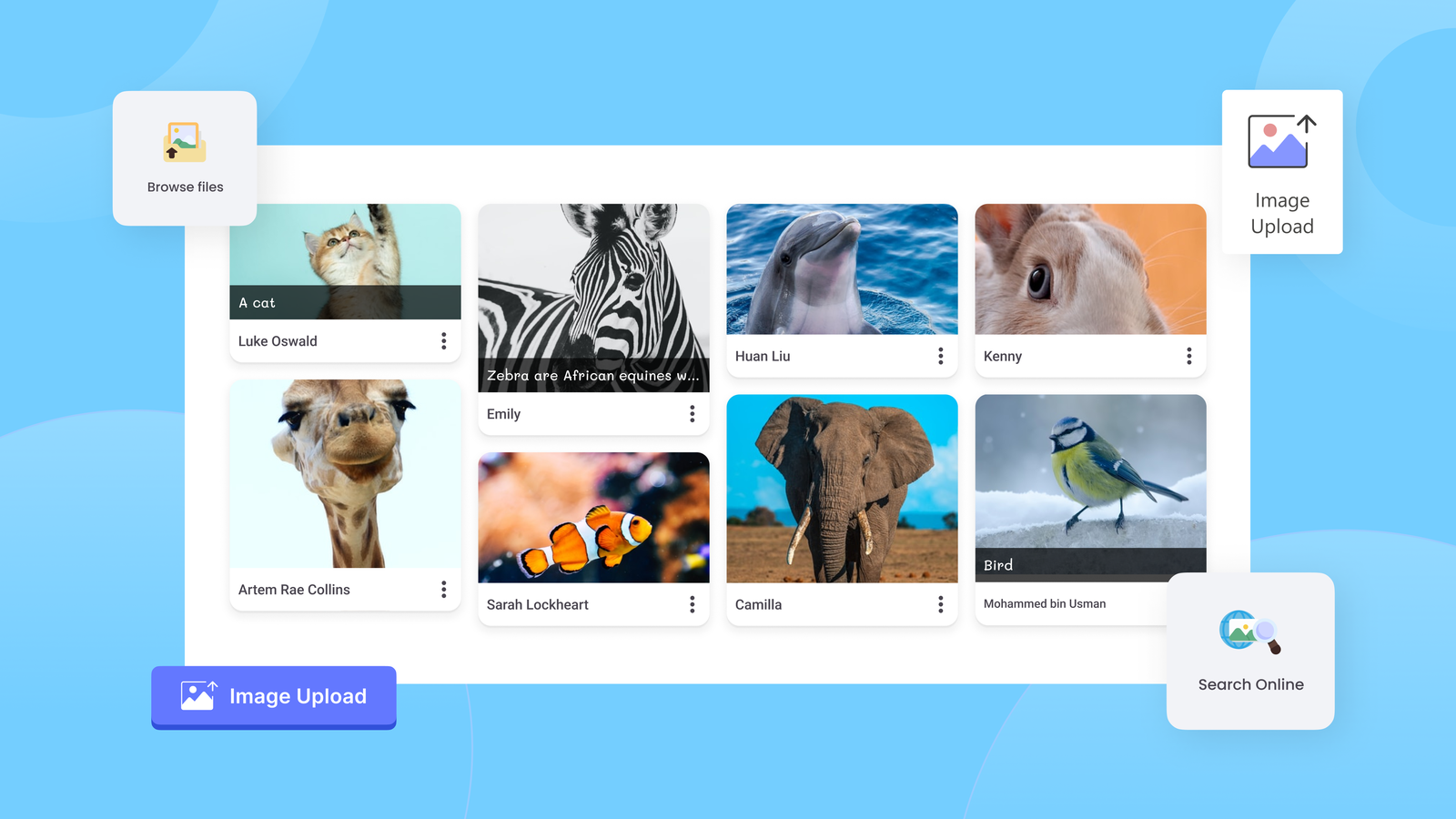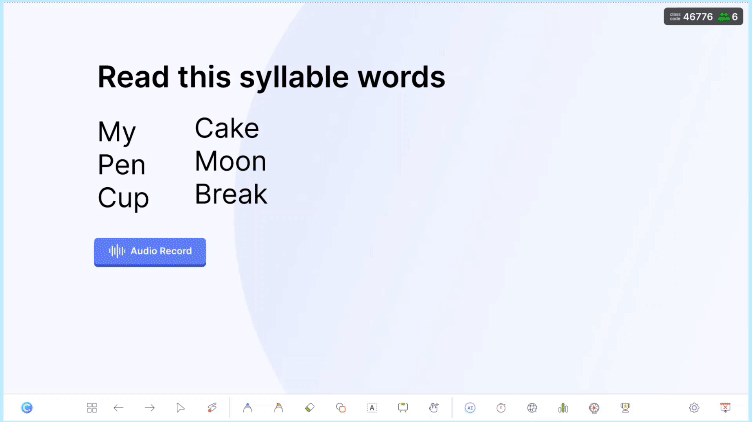It’s raining cats and dogs… but wait, where are the animals?
The homework was a piece of cake… yet no dessert in sight.
If phrases like these leave your students puzzled, you’re not alone. These quirky expressions aren’t meant to be taken literally. They are figurative language in action.
Figurative language turns plain statements into something richer, more expressive, and more fun. It brings writing to life by adding color, emotion, and creativity. Overall, it helps your students communicate not just what they think, but how they feel. From poetry and storytelling to everyday conversation and advertising, figurative language makes words stick and sparkle.
In this blog, we’ll explore the different types of figurative language and share some fun, hands-on activities to help your students understand and enjoy them in the classroom.
Want more writing ideas? Here are 80 Creative and Fresh Writing Prompts for Students of All Ages.
Types of Figurative Language
Through playing creatively with words, writers and speakers stretch meaning, spark imagination, and express emotions in a more colorful way. Below are ten of the most common types of figurative language to introduce to your students, each with simple examples and clear descriptions.
| Figurative Language | Definition | Example |
|---|---|---|
| Simile | Compares two things using like or as | He’s as fast as a cheetah. |
| Metaphor | Directly compares two things without like or as | Her voice is music to my ears. |
| Personification | Gives human traits to non-human things | The flowers begged for water. |
| Hyperbole | Uses extreme exaggeration for emphasis or humor | I waited in line forever. |
| Idiom | A common phrase with a meaning different from its literal words | Break the ice. |
| Onomatopoeia | A word that imitates a sound | The balloon popped with a loud bang. |
| Alliteration | Repetition of the same starting sound in nearby words | Peter picked a peck of pickled peppers. |
| Oxymoron | Pairs two opposite or contradictory words | Seriously funny. |
| Pun | A joke based on wordplay or double meanings | I couldn’t make enough dough. |
| Symbolism | When something represents a bigger idea or feeling | A heart can symbolize love. |
Now that we’ve gotten ourselves familiarized with the most common types of figurative language, let’s explore some fun, engaging activities to reinforce these skills to your students.
Here’s a bonus: claim your free copy of the worksheet to help further develop your students’ flair for creativity today!
Figurative Language Worksheet
Develop your student's mastery of figurative language with this free worksheet
1. Simile Speed Round (Simile)
Objective: Help students practice creating comparisons using “like” or “as.”
Instructions:
- Write a common noun on the board (e.g., “a lion” or “homework”).
- In pairs or small groups, students have 2–3 minutes to write as many similes as possible.
- Each simile must compare the given noun to something else using “like” or “as.”
- Have groups share their best simile aloud.
Example: “Homework is as heavy as a mountain.”
2. Metaphor Makeover (Metaphor)
Objective: Transform literal sentences into creative metaphors.
Instructions:
- Provide students with 3–5 boring or literal sentences.
- Ask them to rewrite each as a metaphor, removing “like” or “as.”
- Encourage creativity while still maintaining the original meaning.
- Share and compare rewritten versions.
Example:
Original: “He was very tired.”
Metaphor: “He was a deflated balloon dragging across the floor.”

Pro Tip: For PowerPoint users, you’ll definitely love ClassPoint. It’s an all-around teaching tool that lets you collect answers in real-time with the Short Answer activity. The bonus? You can opt to share the responses in class for collective discussion.
3. Personification Poem (Personification)
Objective: Practice giving human qualities to non-human things.
Instructions:
- Ask students to choose an object or element of nature (e.g., wind, clock, tree).
- Write a 4-line poem giving it human traits, emotions, or actions.
- Use strong verbs and descriptive adjectives.
- Illustrate the poem or present it aloud.
Example:
“The wind tiptoed through the night,
Whispering secrets out of sight.”
4. Hyperbole Poster Ads (Hyperbole)
Objective: Understand how exaggeration works in persuasive language.
Instructions:
- Assign each student a product (real or made-up) to advertise.
- Students design posters using slogans or taglines with hyperbole.
- The exaggeration should be obvious and humorous.
- Display around the classroom.
Example: “Our chips are so crunchy, they echo across the planet!”

Here’s a hack: Use ClassPoint’s Image Upload for accepting your students’ submissions and display select works in your class.
5. Onomatopoeia Comic Strip (Onomatopoeia)
Objective: Use sound-effect words in a storytelling context.
Instructions:
- Provide students with comic strip templates (4–6 panels).
- Students create a mini-story that involves action scenes.
- Include at least three onomatopoeic words like bam, sizzle, or clang.
- Add dialogue and color for visual appeal.
Example: “The car went vroom as it zoomed past the crash site.”
6. Idiom Charades (Idiom)
Objective: Interpret and act out idiomatic expressions.
Instructions:
- Write idioms on small slips of paper (e.g., “break the ice,” “costs an arm and a leg”).
- Students take turns drawing a card and silently acting out the idiom.
- The rest of the class guesses the phrase and explains its meaning.
- Discuss what makes it figurative, not literal.
Example: “Kick the bucket” = to die.
Classroom cheat code: Need a morale boost? Level up engagement using ClassPoint’s Award Stars. Let your students level up and earn badges while competing with peers through the live leaderboard.
7. Alliteration Art (Alliteration)
Objective: Create alliterative phrases and visualize them.
Instructions:
- Ask students to choose a letter or sound.
- Write a phrase or sentence using at least 4–5 words that start with that same sound.
- Draw or design a picture that illustrates the phrase.
Example: “Brave bears battle blizzards bravely.”
Try this out: ClassPoint’s Slide Drawing allows your students to annotate and illustrate directly on your slides without leaving PowerPoint. Plus, the variety of annotation tools like ink, text box and shapes, and spotlight is a great way to turn alliteration practice into an interactive visual activity.
8. Oxymoron Detective (Oxymoron)
Objective: Spot and explain contradictory word pairings.
Instructions:
- Provide short passages, poems, or lyrics containing oxymorons.
- Students highlight oxymorons and write down what makes them contradictory.
- Share findings and discuss how they add depth to writing.
Example: “Act naturally” – acting isn’t usually natural.
9. Simile vs Metaphor Sort (Simile & Metaphor)
Objective: Distinguish between two similar types of comparisons.
Instructions:
- Prepare a set of sentence strips with similes and metaphors.
- Students read each and sort them into two categories.
- After sorting, they explain why each sentence belongs where it does.
- Bonus: Have them rewrite similes as metaphors and vice versa.
Example:
Simile: “She’s like a rose.”
Metaphor: “She is a rose.”
Teacher trick: Turn this into an interactive exercise with ClassPoint’s Drag and Drop, easily converting elements into draggable objects, perfect for arranging similes and metaphors in your sorting activity.
10. Personification Puppet Skit (Personification)
Objective: Use storytelling to humanize inanimate objects.
Instructions:
- In pairs, students pick two classroom objects (e.g., stapler and notebook).
- Write a short dialogue where the objects talk, argue, or have feelings.
- Use paper puppets or props to act out the scene for the class.
Example: The eraser says, “I’m tired of cleaning up your messes, pencil!”
11. Hyperbole Story Stretch (Hyperbole)
Objective: Write an exaggerated narrative for humor and expression.
Instructions:
- Students write a short story (half a page) using at least three hyperboles.
- Encourage outrageous exaggerations that are clearly unrealistic.
- Read them aloud and vote for the most dramatic story.
Example: “The backpack weighed a thousand pounds!”
12. Onomatopoeia Sound Hunt (Onomatopoeia)
Objective: Translate real-life sounds into onomatopoeic words.
Instructions:
- Take a short walk around the school or classroom with clipboards.
- Students list sounds they hear (e.g., footsteps, birds, doors creaking).
- Translate each into onomatopoeia.
- Use the list to write a short descriptive paragraph or poem.
Example: “The floor creaked eeeek with every step.”
13. Idiom Match-Up Game (Idiom)
Objective: Learn idioms through matching and memorization.
Instructions:
- Create card pairs: one with an idiom, one with its meaning.
- Students play in pairs or small groups, taking turns flipping two cards to find matches.
- When a match is made, the student must use the idiom in a sentence.
Example: “Bite the bullet” = “Do something painful or unpleasant.”
Here’s a cool shortcut: Make groupings easier with ClassPoint’s Name Picker Wheel. Simply spin the wheel, and it instantly picks students’ name for a quick random selection.
14. Alliteration Tongue Twister Challenge (Alliteration)
Objective: Practice repetition of consonant sounds.
Instructions:
- Each student writes a tongue twister with at least five alliterative words.
- Share tongue twisters with the class.
- Hold a speed-read contest to see who can say each one without stumbling.
Example: “Fiona’s fish flopped five feet forward.”

One method to consider: Let your students record their voice live or upload a pre-recorded audio file to your slide, demonstrating their exemplary skills when it comes to tongue twister.
15. Oxymoron Poster Parade (Oxymoron)
Objective: Explore the meaning and usage of oxymorons visually.
Instructions:
- Each student chooses an oxymoron (e.g., “bittersweet,” “old news”).
- Let them create a mini-poster that includes:
- The oxymoron
- A visual representation
- A sentence using it in context
- Display posters around the room for a gallery walk.
Example: “My vacation ending was bittersweet. I was happy and sad at the same time.”
Figurative Language Worksheet
Develop your student's mastery of figurative language with this free worksheet

